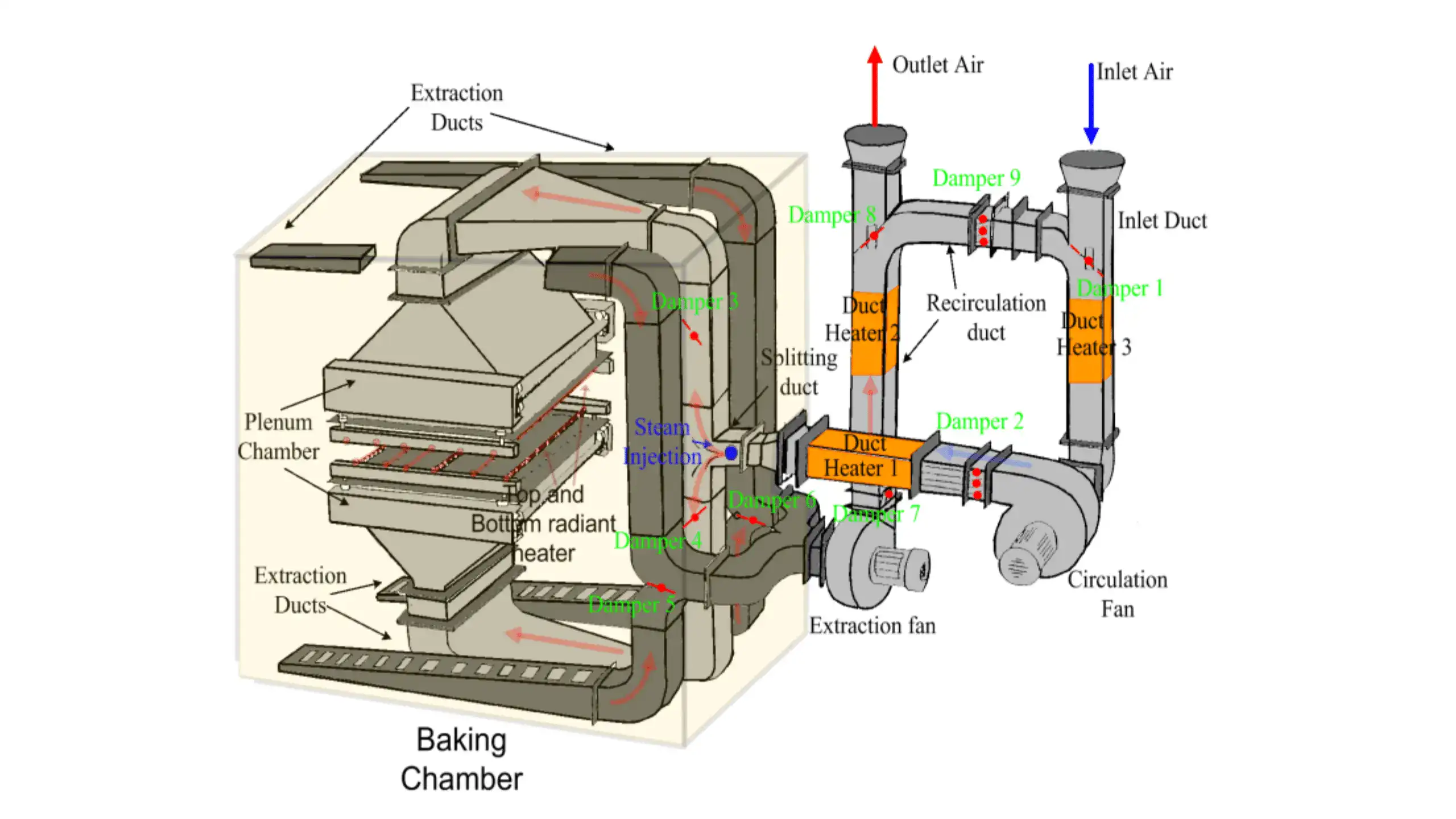Examination of Heat Transfer in Baking using a Thermal Performance Research Oven
by
François Pierrel
Industrial baking oven design follows long−established rules of thumb, but the boundaries for effective heat transfer, which provide minimum baking time and high-quality food products are not well understood.
With a view to reducing bake time, the overall aim of this research was to examine increased rates of heat transfer in baking by means of a Thermal Performance Research Oven (TPRO). If a reduction in bake time of only 10% was achievable, a major benefit would exist for both the sponsor of this project and for bakeries (increased throughput per hour or reduced oven footprint per number of products baked).
Chapter 1 highlights the current and past trends in the baking industry with respect to bread, biscuit and cakes. It also discusses the two basic methods for approaching this research (theoretical, empirical).
In Chapter 2 the design and function of the TPRO are described, where the main objective was to explore existing heat transfer conditions as they exist in current baking ovens and to permit baking beyond these conventional limits.
One of the challenges was to attempt to give the TPRO the capability to reproduce existing temperature and humidity conditions as occur in the adjacent and separately controlled zones of existing travelling ovens. This was explored in Chapter 2 via a mathematical model which was designed to provide a first-order indication of the heating conditions within the TPRO.
The outcome of this analysis as well as the development of a unique computer-aided control system (Chapter 3) provided the platform for subsequent tests. A series of preliminary (non−food) tests were undertaken to examine the thermal performance envelope of the TPRO under different sets of conditions (Chapter 4).
An energy balance was derived from measured results of the entire process and was generated to depict in real-time (from transient to steady state), the energy distribution in the various components of the oven. The operating performance of the TPRO is described in Chapter 4.
Chapter 5 proposes a ‘baking comfort zone’ concept (similar to the ‘thermal comfort’ concept in buildings) as an approach to baking optimisation analysis.
Then a design of experiments approach (DOE) was developed for undertaking the food tests and the various measurements and analyses developed for the experimental approach for Madeira cake are described in Chapter 6. This chapter presents the results emerging from the three−stage DOE (screening, factorial, central composite) employed for analysing the baking process.
The influence of each of the main design factors (temperature, humidity etc.) affecting the product responses (colour, crust hardness, etc.) is discussed statistically in terms of significance. Interactions between design factors and responses and their relationships are identified.
A desirability analysis based on the product responses identified which of the responses were a greater constraint on achieving a reduced bake time. The statistical model built upon the DOE identified a bake time reduction of up to 16% (relative to the benchmark) while maintaining acceptable values for the other product responses.
This has been validated experimentally with success. The future translation of this achievement to full-scale industrial baking ovens would permit significant savings in bake time, oven footprint and/or energy consumption to be achieved.

